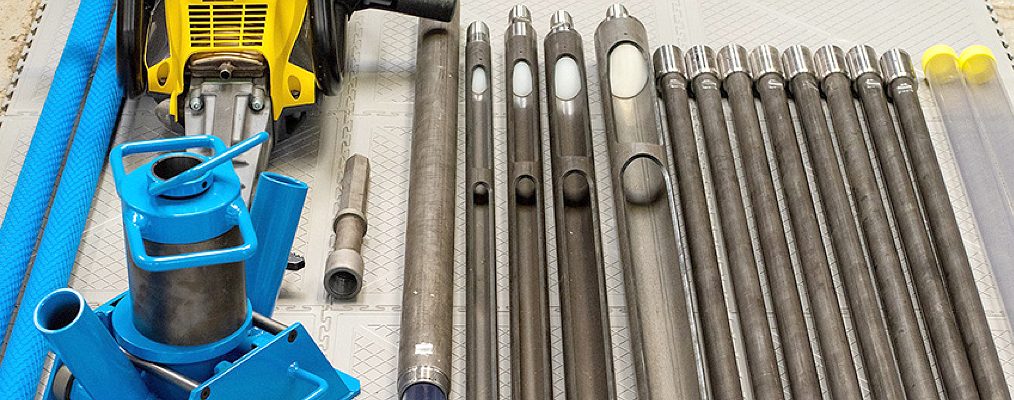The G&W Guide to… Demountable Rigs
Geoenvironmental • Geotechnical
Throughout March and April this year, we posted several blogs about the different types of drilling rigs available… And what you can do with them. However, whether it’s Windowless Sampling, Cable Percussion, Rotary Core Borehole, CPT or another; the ability of the rig to work depends not only on geology and depth required, but what space there is available to set it up.
How do we overcome restricted access issues?
You have to be careful with site access, when planning a site investigation. The last thing you want is the drilling team to turn up and find that they cannot get the equipment on the job. It causes unnecessary delays and extra costs.
So what can we do when we are restricted? For example: a house is covering the majority of the site; there is a 0.60m wide gap to work in between brick work or the access is through a doorway or down stairs or a steep slope?
This is where the more expensive, but more flexible demountable drilling rigs come into play.
The Equipment Options
The Demountable Cable Percussion Borehole Rig – also known as a Cut Down Rig
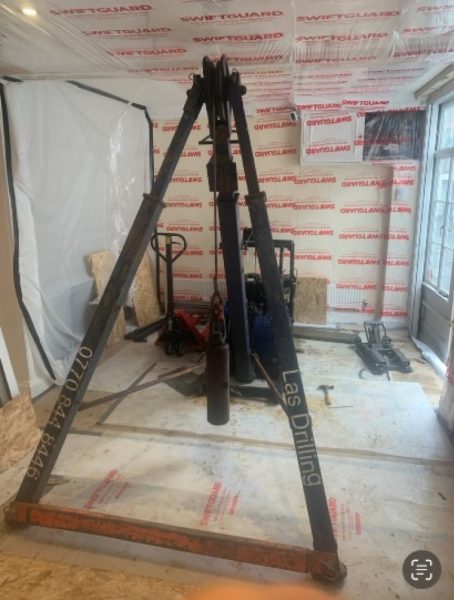
Headroom: It requires a working height/headroom of 2.50 – 3.50m depending on mast options. Ground & Water has a 2.5m mast. It is generally towed on a trailer or carried by a lorry or large van, as it can be broken up into its constituent parts. These parts are then moved into location and the rig is re-assembled.
Working Area: 4m x 4m.
Capabilities: Gravel/Clay – until its get too dense and rock. The deeper you go, and where sand/gravels or groundwater is hit, additional widths of casing are required. Rigs usually come with a single string of casings, which should get the borehole to between 15 to 20m. The deeper you go, the wider you have to start the hole and longer it takes. This adds cost.
Strength Testing: SPT’s, Shear Vanes, U and UT100’s for Laboratory Triaxial Testing, plus other classification tests such as consolidation.
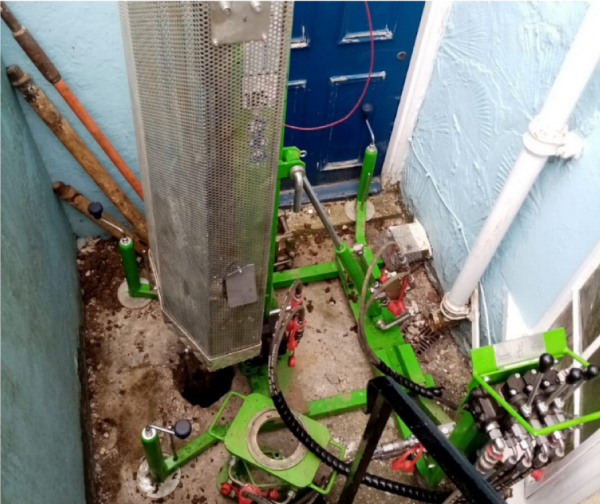 Restricted Access – Windowless Sampling
Restricted Access – Windowless Sampling
The Demountable Mast or LMWS (Lightweight Modular Windowless Sampler) can be deployed into most places, indoors and out, but level ground is required.
Capabilities: Gravel and rock to a depth of 2 to 4m depending on density. Clay to a depth of 8 to 10m depending on strength.
Strength Testing: SPT’s, Shear Vanes, Hand Pens on samples. Can recover Cat A samples from U/UT70 tubes.
The sampler can be used in conjunction with Super Heavy Dynamic Probes. See our guide to Dynamic Probing HERE
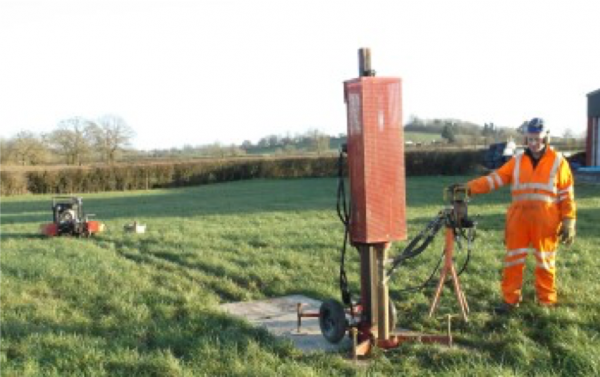
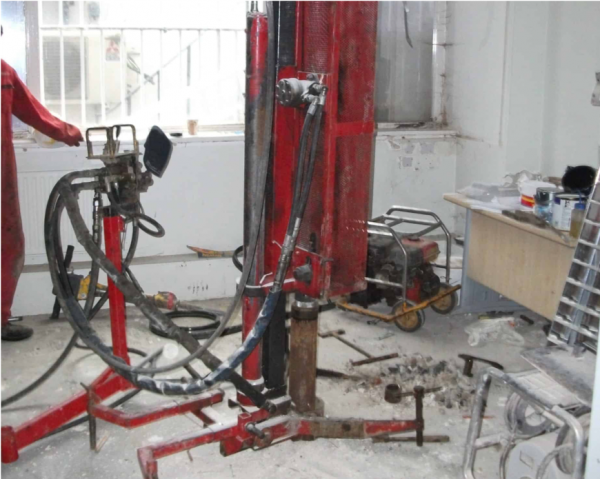
Restricted Access – Hand Held Window Sampling and Probing (Also known as: Continuous Sampling Boreholes)
This is where a metal rod with a sampling “window” (See image below) is driven into the ground percussively with smaller disturbed samples taken from the window.
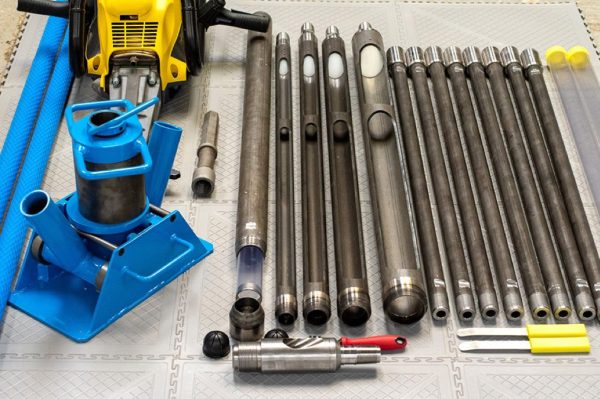
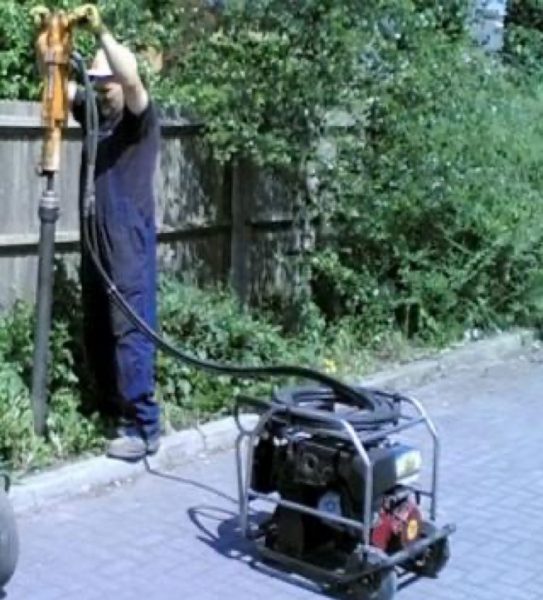
Width: 0.79m (without cages), 1.248m (with cages)
Working height/headroom: 2.0 – 2.5m
Length: 2.729m
Working Area: 2.5m by 3.5m
Can get anywhere you can get a wheel barrow and can stand safely.
Capabilities: Gravel and rock to a depth of 1 – 2m depending on density. Clay to a depth of 6 – 8m depending on strength, possibly 10m on a good day.
Strength Testing: The equipment itself has no strength testing capability. Hand Vanes and Shear Vanes can be considered but if the sample is compacted in the metal tube they will give false readings.
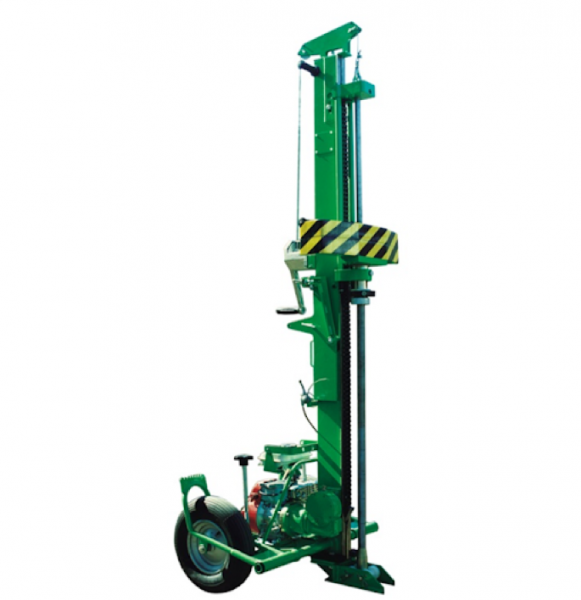 Hand Held Window Sampling is often undertaking in partnership with Heavy Dynamic Probing (HDP).
Hand Held Window Sampling is often undertaking in partnership with Heavy Dynamic Probing (HDP).
The HDP has a width of 0.78m and is 2.350m high.
Capabilities: Gravel and rock to a depth of 1 – 3m depending on density. Clay to a depth of 10 – 12m.
How can Ground & Water help?
Ground & Water can assess whether access is workable for a traditional drilling or sampling rig or whether your site needs a more restricted access friendly, demountable solution. We can then assess the requirements for the job and geology to determine what the best solution is for your site and associated site investigation.
